10 Things We Learned About the Brain in 2018
The amazing brain
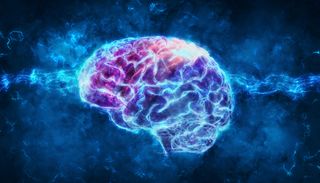
The brain sculpts not only who we are but also the world that we experience. It tells us what to see, what to hear and what to say. It expands to accommodate a new language or skill that we learn. It tells stories when we're sleeping. It sends alarm signals, and it spurs the body to run or fight when it senses danger. The brain adapts to environments so we aren't annoyed by a constant smell in an old house or the constant hum of the air conditioning. Our brains look to the sun and tell our body what time it is. The brain stores memories, both painful and pleasant.
But as essential as the brain is to our existence, it's still as mysterious to us as a planet from a far-flung galaxy. Even in 2018, neuroscientists are still discovering fundamental facts about this roughly 3-lb. (1.4 kilograms) bulk of tissue. Sometimes, researchers get a glimpse of a human brain or see what happens to a person when a large bulk of the brain is missing. Other times, scientists must study mice to learn more about mammalian brains and then do some guesswork on how those findings relate to our own brains.
Here are some fascinating things we learned about the brain in 2018.
A new kind of neuron

It's not every day that scientists discover a completely new type of cell in the human brain, especially one that's not found in neuroscientists' favorite nonhuman subjects, mice. The "rosehip neuron," so named because of its bushy appearance, had eluded scientists until this year, partly because it's so rare.
This elusive brain cell makes up only about 10 percent of the first layer of the neocortex, one of the newest parts of the brain in terms of evolution (meaning the far-distant ancestors of modern humans didn't have this structure). The neocortex plays roles in vision and hearing. Researchers don't yet know what the rosehip neuron does, but they found that it connects to other neurons called pyramidal cells, a type of excitatory neuron, and puts the brakes on them.
[Read more about the rosehip neuron]
U.D., the neuroscience patient

A boy, known in the medical literature as "U.D." had one-third of the right hemisphere of his brain removed four years ago in order to reduce his debilitating seizures. The part of the brain that was removed included the right side of his occipital lobe (the brain's vision-processing center) and most of his right temporal lobe, the brain's sound-processing center. Now age 11, U.D. can't see the left side of his world, but he functions just as well as others his age in cognition and vision processing, even without that key part of the brain.
That's because both sides of the brain process most aspects of vision. But the right is dominant in detecting faces, while the left is dominant in processing words, according to a case study written about U.D.
That study showcases the plasticity of the brain; in the absence of U.D.'s right vision-processing center, the left center stepped in to compensate. Indeed, researchers found that the left side of U.D.'s brain detected faces just as well as the right would have.
The brain may contain bacteria
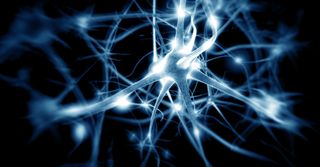
Our brains might be teeming with bacteria. But don't worry — it doesn't look like they cause any harm.
Previously, scientists thought that the brain was a bacteria-free environment and that the presence of microbes was a sign of disease. But preliminary findings from a study presented this year at the large annual Society for Neuroscience scientific meeting found that our brains could actually house harmless bacteria.
The researchers in that study had been examining 34 postmortem brains, looking for differences between those with schizophrenia and those without the condition. However, the researchers kept happening upon rod-shaped objects in their images, and these shapes turned out to be bacteria.
The microorganisms seemed to dwell in some spots in the brain more than in others; those areas included the hippocampus, the prefrontal cortex and the substantia nigra. The microbes were also found in brain cells called astrocytes that were near the blood-brain barrier, the "border wall" that guards the brain.
The findings haven't been published in a peer-reviewed journal yet, and more research is needed to confirm the findings, the scientists said.
[Read more about bacteria in the brain]
The brain is magnetic
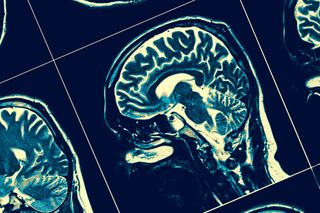
Our brains are magnetic. Or, at least, brains contain particles that can be magnetized. But scientists don't really know why these particles are in the brain or where they originated. Some researchers believe that these magnetizable particles serve a biological purpose, while others say the particles got into the brain because of environmental contamination.
This year, scientists mapped out where these particles are located in the brain. The results of their study, the researchers said, provide evidence that the particles are there for a reason. That's because in all the brains the scientists examined — from seven people who died in the early 1990s between ages 54 to 87 — the magnetic particles were always concentrated in the same areas. The investigators also found that most parts of the brain contained these little magnets.
Many animal brains also have magnetic particles, and there's even some suggestion that animals use these particles to navigate. What's more, a type of bacteria called magnetotactic bacteria use the particles to orient themselves in space.
[Read more about our magnetic brain]
Virus responsible for human consciousness?
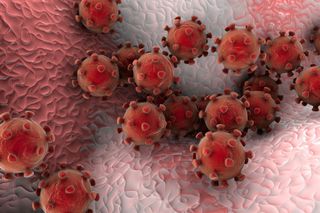
An ancient virus infected people long ago, and this invader left behind its genetic code in our DNA. This year, researchers found that snippets of that ancient viral DNA play a vital role in the communication among brain cells that's required for higher-order thinking.
It's not uncommon for humans to carry around snippets of viral genetic code; around 40 percent to 80 percent of the human genome consists of genes left behind by viruses.
In the study this year, the researchers found that a viral gene called Arc packages up other genetic information and sends it off from one nerve cell to the next. This gene also helps cells reorganize over time. What's more, problems with the Arc gene tend to occur in people who have autism or other neural disorders.
Researchers now hope to figure out the exact mechanism by which the Arc gene got into our genome and what exactly it's telling our brain cells.
[Read more about this ancient virus]
Young cells in old brains or nah?
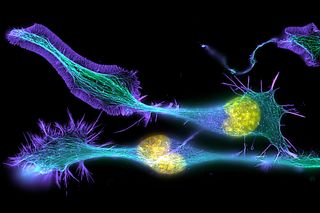
Our bodies continuously dispose of old cells and make new ones. But for decades, scientists believed that this cell turnover didn't happen in aging brains. In recent years, however, studies done in mice — and some early studies done in humans — have raised questions about this notion.
This year, a paper provided what may be the first strong evidence that older brains do make new cells. The researchers studied 28 postmortem, nondiseased brains from people who were ages 14 to 79 when they died. The scientists sliced up each brain's hippocampus, an area of the brain that's important for learning and memory, then counted the number of young cells that weren't fully mature. The researchers found that older brains had as many new cells as younger brains did but that the older brains made fewer new blood vessels and connections among brain cells.
To complicate matters, however, a different study, published a month before this one, found the opposite, concluding that adult brains do not make new cells in the hippocampus. The disagreement could be due to the way the brains were preserved in the two studies and the kinds of brains that were examined. (The earlier study looked at brains with different health conditions, while the later research looked at only nondiseased brains. They could have also used different preservation techniques which could affect the cells.)
[Read more about young cells in old brains]
Your brain on stress
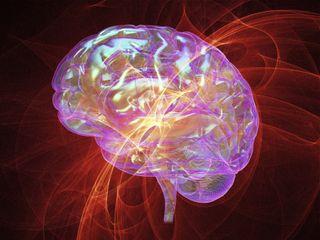
Bad news: Stress may shrink the brain. That's according to a study published in October of this year.
In the study, researchers looked at more than 2,000 healthy, middle-age people and found that those with higher levels of the stress hormone cortisol had slightly smaller brain volumes than people with normal amounts of the hormone. People with higher cortisol levels also performed more poorly on memory tests than did people with normal levels of the hormone. Both findings, it should be noted, are associations between stress and the brain and not cause-and-effect findings.
Stress is normal for the body: During moments of stress, cortisol levels rise along with those of another hormone, adrenaline. These hormones work together to throw your body into a fight-or-flight response. But once the stressful part is over, cortisol levels should decrease. They don't always do this, however. Some people, especially in this modern life, can have elevated levels of cortisol for long periods of time. Reducing stress — such as by getting better sleep, getting exercise, engaging in relaxation techniques and taking cortisol-reducing medication — could have a range of benefits, the researchers said.
[Read more about your brain on stress]
Does your brain let you hear your own footsteps?

Click, click, click: You might have your brain to thank for sparing you from hearing every single step you take. A study conducted in mice this year found that the mouse brain canceled out the sound of the critter's own footsteps. This allowed the creatures to better hear other sounds in their surroundings, such as the noises of a predator.
The researchers found that the mouse brain built a noise filter as the brain got acclimated to a specific sound. It did this by coupling cells in the motor cortex, an area of the brain that's involved with movement, to the auditory cortex, an area involved with sound. Simply put, brain cells in the motor cortex fire signals to block brain cells in the auditory cortex from firing their own signals — essentially muting the auditory cortex.
And though the study was done in mice, the scientists think that the results could also apply to humans. That's because we have similar systems in place already. For example, figure skaters' brains learn what movements to expect, and inhibitory neurons cancel out reflexes that would prevent these athletes from spinning and performing their crazy twirls.
[Read more about this noise-canceling filter]
Psychedelic drugs may change the structure of brain cells
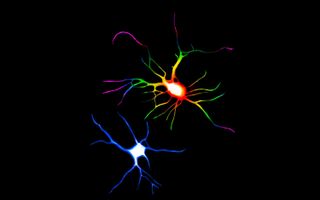
Psychedelic drugs can physically change the structure of brain cells, according to a new study. This research was conducted on brain cells in lab dishes and in animals, but if the findings hold true for humans, the results could mean that these drugs can help people who have certain mood disorders.
That's because in people with depression, anxiety or other mood disorders, neurons in the prefrontal cortex, a part of the brain important for controlling emotions, tend to shrivel up. And their branches — which neurons use to talk to other neurons — tend to retract. But when the scientists added psychedelic drugs including LSD and MDMA to petri dishes with rat neurons, they found that the number of connections and branches in the nerve cells increased.
[Read more about how psychedelics change the brain]
A second brain in the gut?
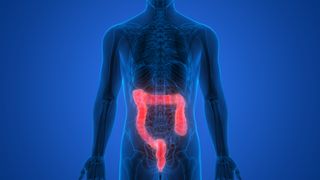
Millions of brain cells live in the large intestine, and because these cells function without any instructions from the brain or spine, scientists sometimes refer to the mass of them as "the second brain." But this mass also has a scientific name: the enteric nervous system. And a new study, done in mice, shows that the system is pretty smart; it can fire synchronized neurons to stimulate muscles and coordinate their activity so that it can do things like move feces out of the body.
The actual brain (the one in your head) can also do this — synchronize the firing of neurons — in the early stages of brain development. This means that the neuron actions in the gut could be a "primordial property" from the first stages of the second brain's evolution. Some scientists even hypothesize that the second brain evolved before the first and that this firing pattern comes from the earliest functioning brain in the body.
Sign up for the Live Science daily newsletter now
Get the world’s most fascinating discoveries delivered straight to your inbox.

Yasemin is a staff writer at Live Science, covering health, neuroscience and biology. Her work has appeared in Scientific American, Science and the San Jose Mercury News. She has a bachelor's degree in biomedical engineering from the University of Connecticut and a graduate certificate in science communication from the University of California, Santa Cruz.












